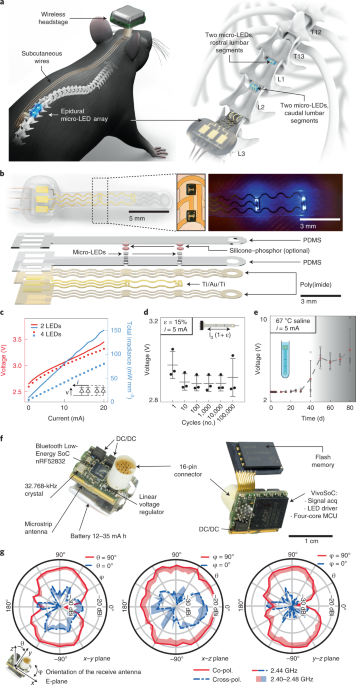Transistors inside modern computer chips are several nanometers across, and switch on and off at hundreds of gigahertz. Organic electrochemical transistors, made for biodegradable applications, are milimeters in size and switch at kilohertz rates. The world’s first wooden transistormade by a collaboration of researchers through the Wallenberg Wood Science Center and reported this week in Publications of the National Academy of Sciencesis 3 centimeters across and switches at less than one hertz. While it may not be powering any wood-based supercomputers anytime soon, it does hold out promise for specialized applications including biodegradable computing and implanting into living plant material.
“It was very curiosity-driven,” says Isak Engquist, a professor at Linköping University, in Sweden, who led the effort. “We thought, ‘Can we do it? Let’s do it, let’s put it out there to the scientific community and hope that someone else has something where they see these could actually be of use in reality.’”
“I have colleagues who are at the forefront in a field we call electronic plants….We have worked with deadwoods for this project, but the next step might be to integrate it also into living plants.”
—Isak Engquist, Linköping University
Even though the wooden transistor still awaits its killer app, the idea to build wood-based electronics is not as crazy as it sounds. A recent review of wood-based materials says, “Around 300 million years of tree evolution has yielded over 60,000 woody species, each of which is an engineering masterpiece of nature.” Wood has great structural stability while being highly porous and able to efficiently transport water and nutrients. The researchers leveraged these properties to create conducting channels inside the wood’s pores and electrochemically modulate their conductivity with the help of a penetrating electrolyte.
Of the 60,000 species, the team chose balsa wood for its strength, even when one of the components of its structure—lignin—was largely removed to make more room for conducting materials. To remove much of the lignin, pieces of balsa wood were treated with heat and chemicals for 5 hours. Then, the remaining cellulose-based structure was coated with a conducting polymer. The team tried several polymers, but they found one known as PEDOT:PSS to be the most effective, in part because it’s water soluble. Since the pores inside wood are made for transporting water, the PEDOT:PSS solution readily spread through the tubes. Electron microscopy and X-ray imaging of the result revealed that the polymer decorated the insides of the tube structures. The resulting wood chunks conducted electricity along their fibers.
To assemble a transistor, the researchers used three pieces of conducting wood, each 3 centimeters in length and several millimeters in height and width, arranged in a T shape. The top of the T served as the transistor channelwith a source on one end and a drain on the other. The channel was sandwiched between two “gate” pieces, forming the leg of the T. At the points of contact between the channel and the gates, the researchers layered a gel electrolyte. A voltage applied to the gates delivers hydrogen ions from the electrolyte into the polymer, causing a chemical reaction that changes the conductivity of the polymer. This reaction is reversibleallowing for the on-off operation of this wood-based transistor.
“I think this opens up a really interesting space. This is really just the beginning, I believe.”
—Daniel Simon, Linköping University
This was a proof-of-principle effort and, Engquist says, higher currents and smaller devices should be possible to engineer. Even still, it is unlikely to serve as the basis for complex electronics. However, it may find uses as an on/off switch for other components, such as solar cells, batteries, or sensors, that may be incorporated into wood, dead or living. “I have colleagues who are at the forefront in a field we call electronic plants,” Enquist says, “and they try to integrate electronic functionality into living plants. We have worked with deadwoods for this project, but the next step might be to integrate it also into living plants.”
A potential advantage of the wooden transistor is that it’s self-supporting: It does not require a substrate to be printed or deposited onto. Manufacturers of organic electrochemical transistors—versatile devices that are heavily researched for biosensing and bioelectronics applications—strive to make them from sustainable materials. Yet they still require glass or other substrates that are not sustainably sourced. “If we really do move to renewable or forest-based or bio-based materials, not just as an additive but as the actual structural components of the device,” says Daniel Simon, a professor of bioelectronics at Linköping University who was not involved in the work, “I think this opens up a really interesting space. This is really just the beginning, I believe.”
That said, these applications are still hypothetical, and the work, the researchers say, was done in the spirit of collaborative curiosity. “What was really important in this project was that we were very cross-disciplinary,” Engquist says. “We would not have a chance to have done this without the wooden-cellulose experts. And they, on the other hand, would never have thought of incorporating transistors into the wood that they are expertly treating in so many different ways. So it was only when we came together that we were able to do this, and I hope very much that that kind of collaboration in other places will find a use for what we have been doing here.”
Note: This article have been indexed to our site. We do not claim legitimacy, ownership or copyright of any of the content above. To see the article at original source Click Here













